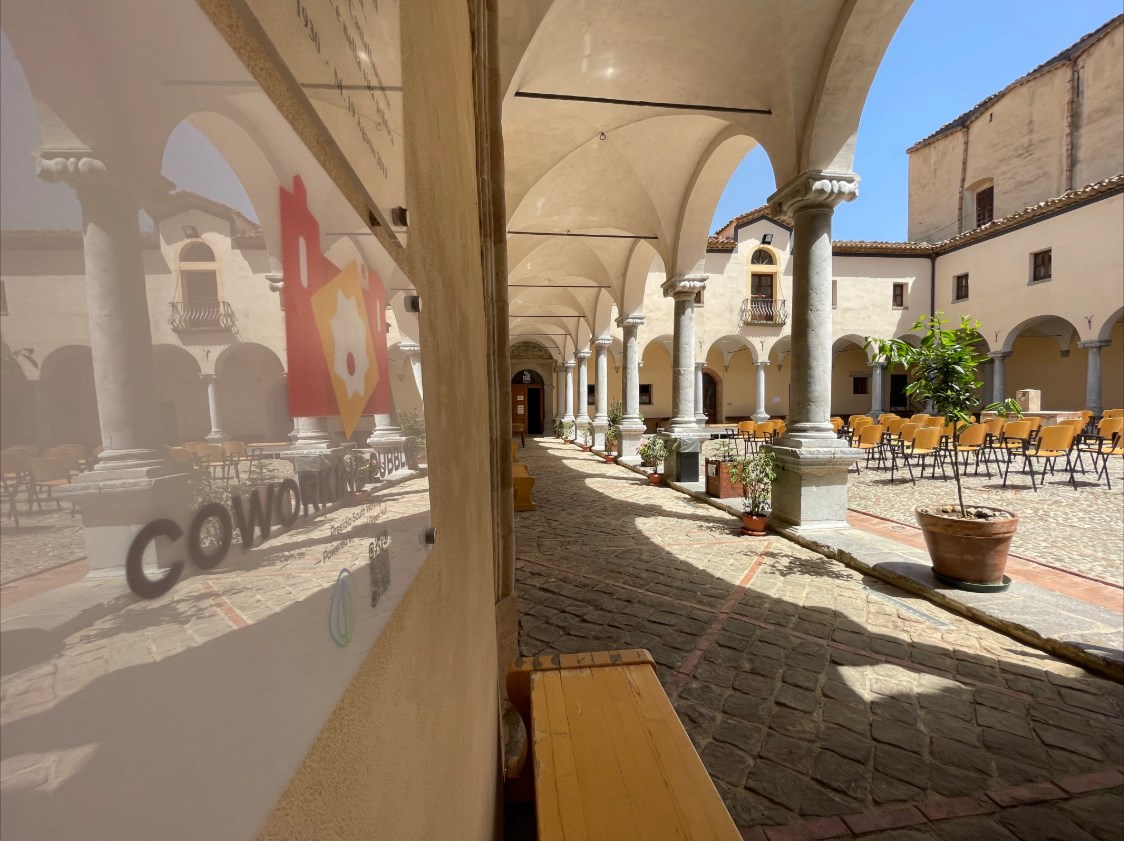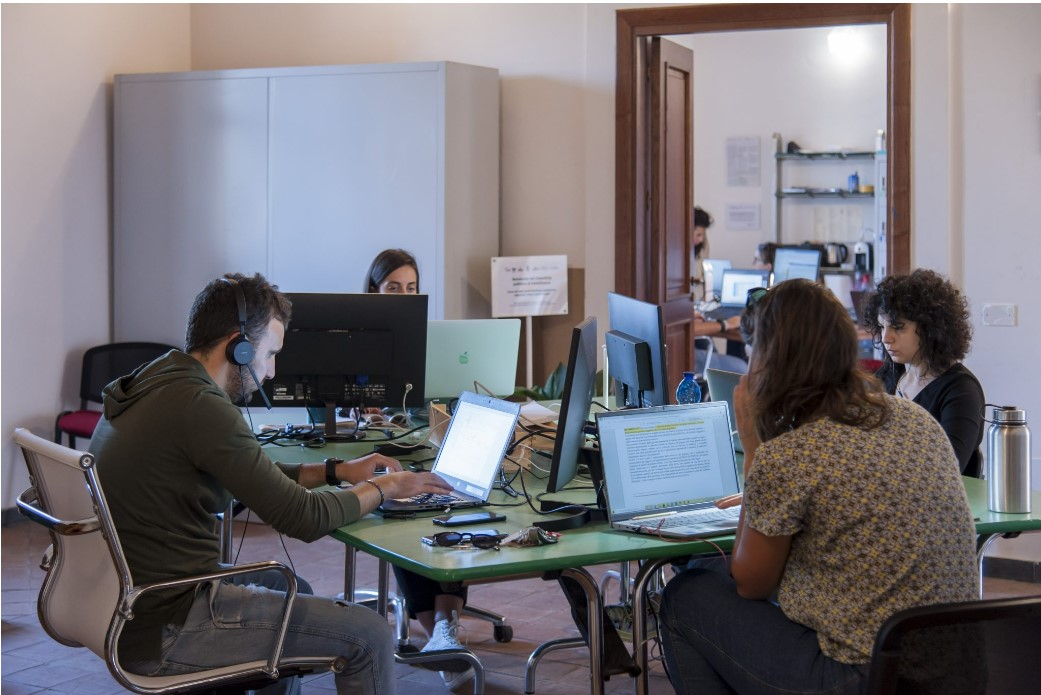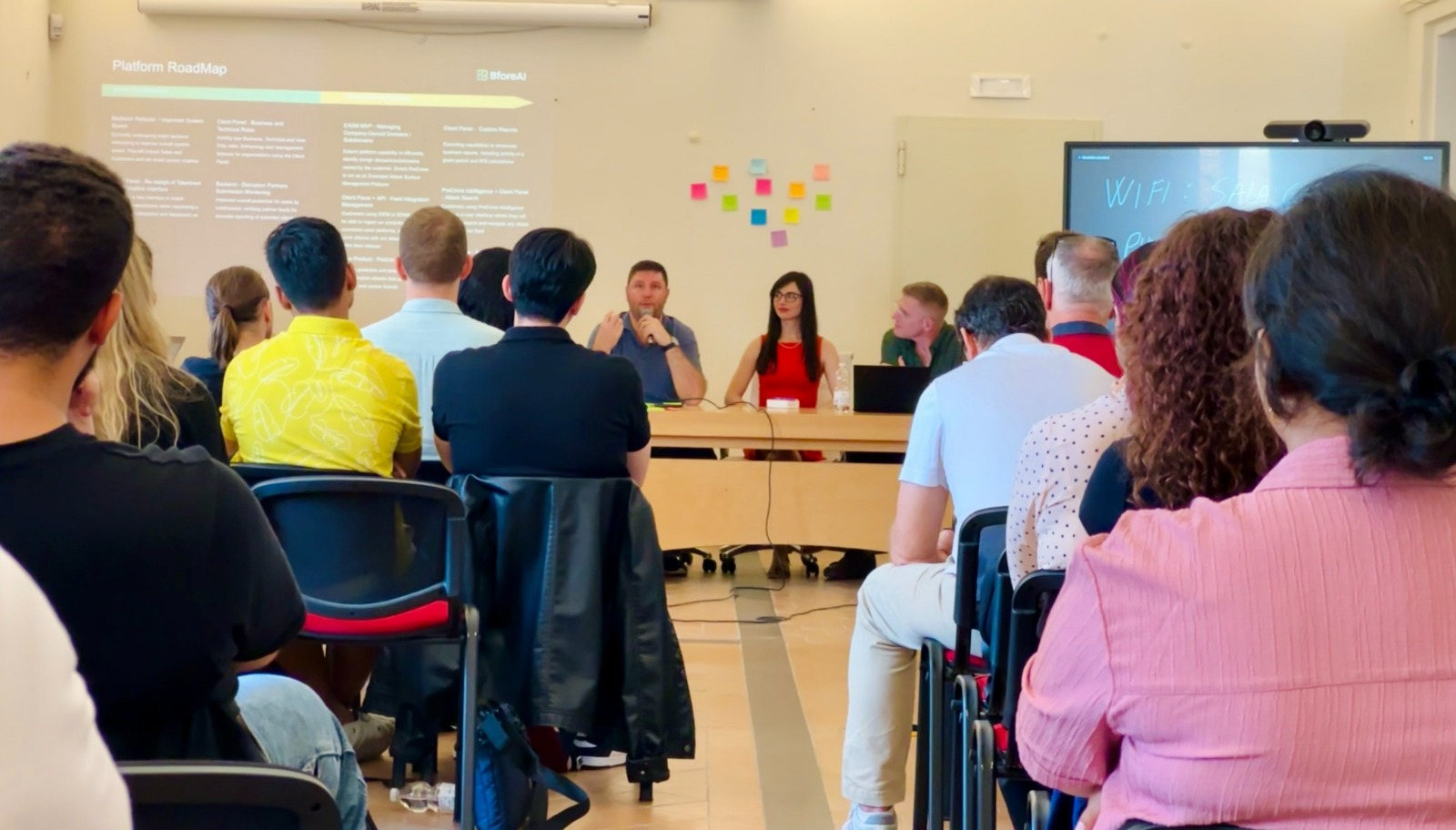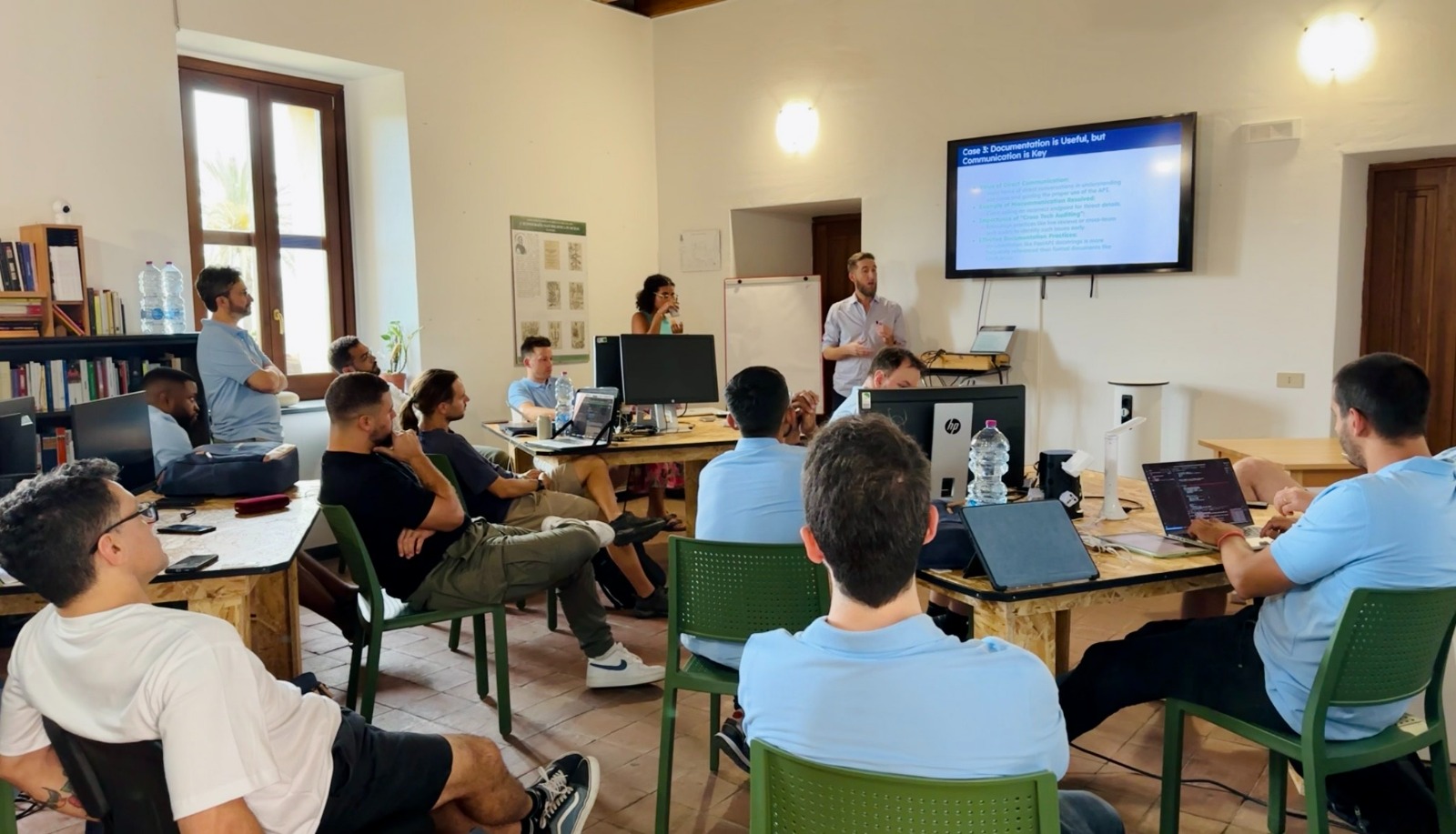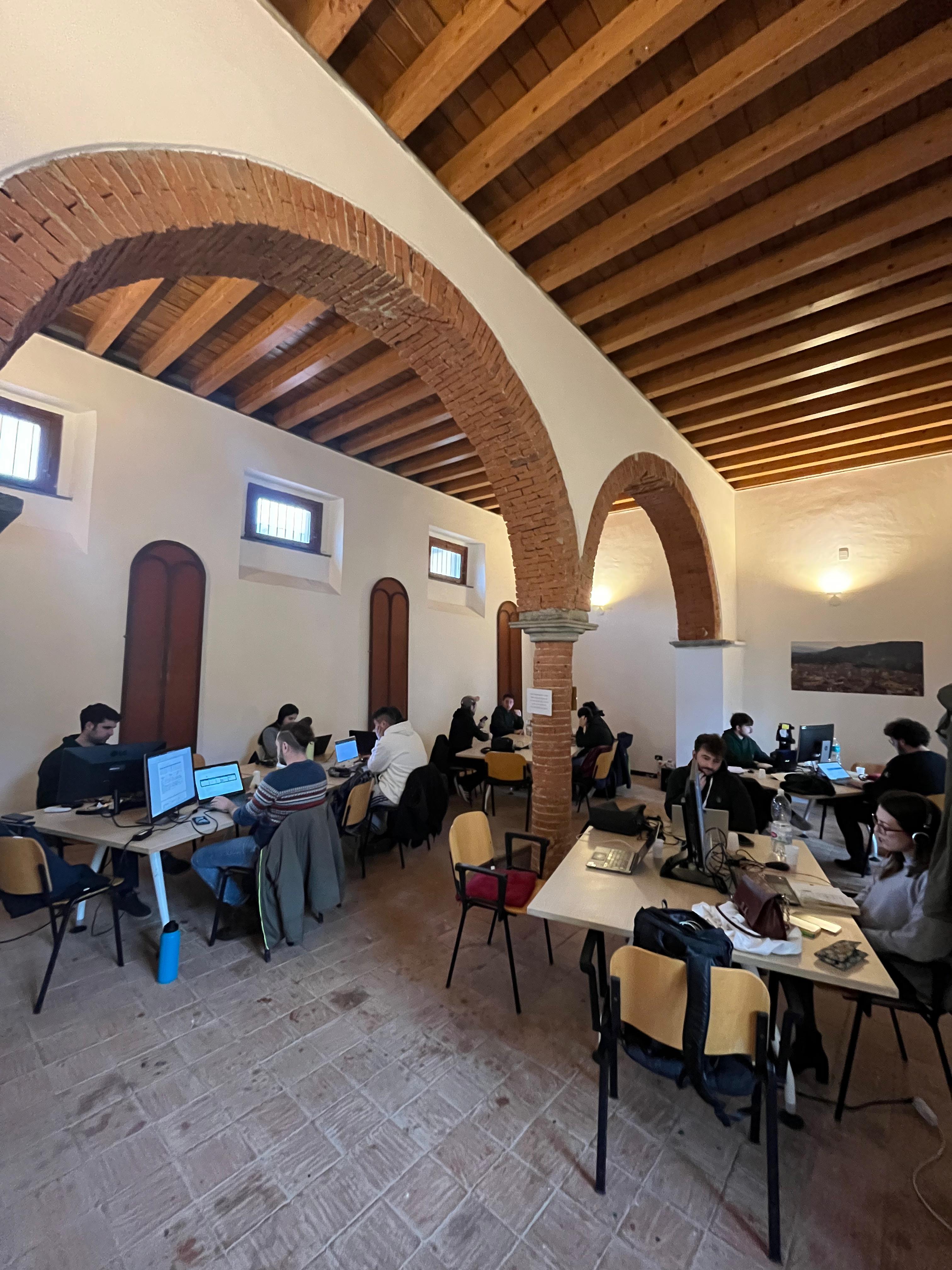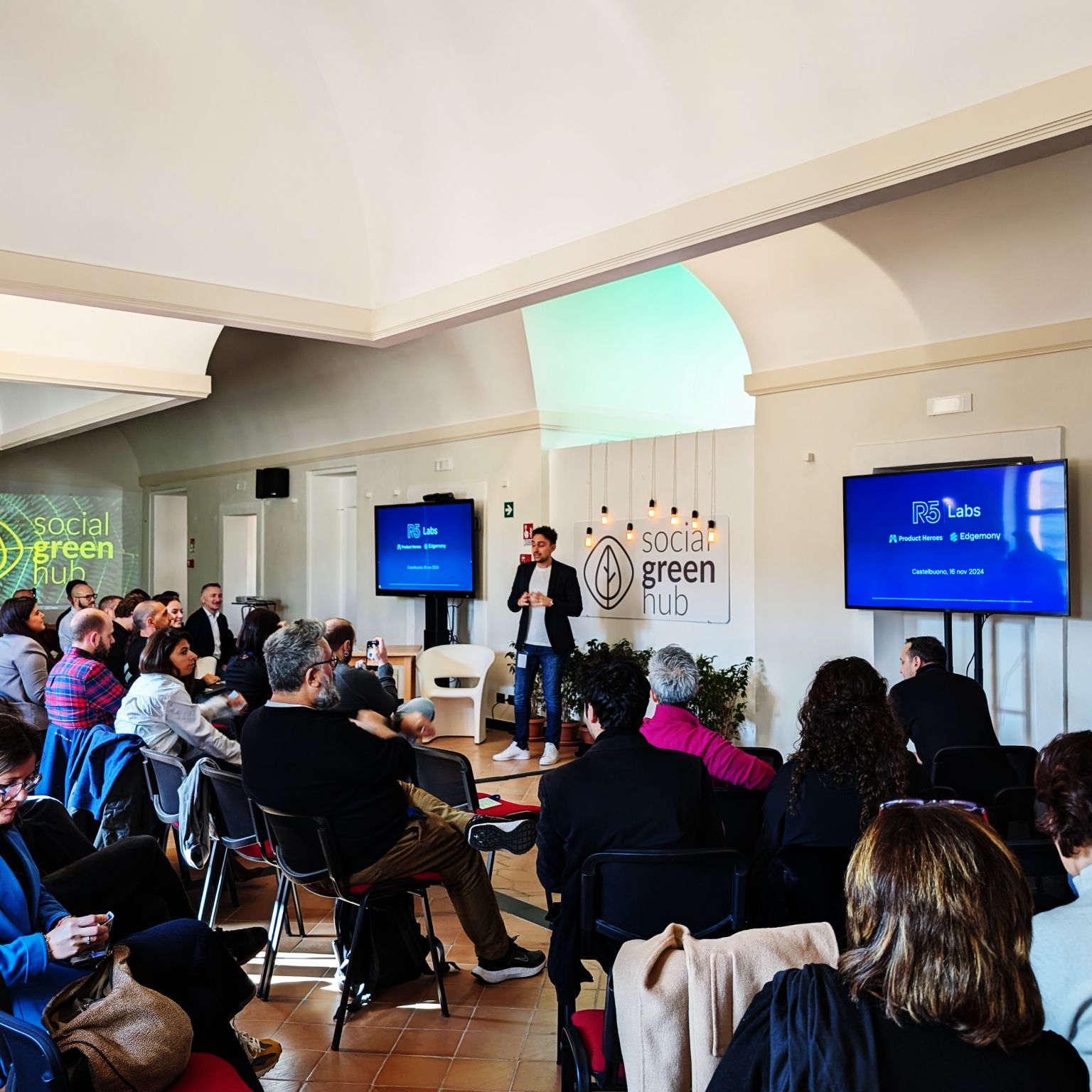Regaining a sense of belonging
South Working Castelbuono
Working from the South to fight against depopulation: South Working Castelbuono project
Social Green Hub transforms an 18th-century building into a sustainable coworking space, offering affordable memberships, flexible workspaces, and free learning opportunities. It promotes eco-friendly practices through energy-efficient systems and waste reduction. The hub attracts remote workers to counter rural depopulation, boosting the local economy and creating jobs. Through community engagement, technology integration it serves as a model for rural development in Europe.
Italy
National
It addresses urban-rural linkages
It refers to other types of transformations (soft investment)
Yes
2024-12-28
No
No
No
As a representative of an organisation
The Social Green Hub project (South Working Castelbuono) embodies New European Bauhaus values by converting an 18th-century building into a sustainable coworking space that blends heritage with modern professional needs.
Offering low-cost memberships, flexible workspaces, and free learning opportunities, it ensures access to professional growth and networking for all. The hub fosters collaboration across diverse industries and skill levels.
Sustainability is key, with eco-friendly materials, energy-efficient systems, and waste reduction practices. It promotes green commuting and responsible business operations.
To counter rural depopulation, the hub attracts remote workers, boosting the local economy and creating jobs, especially during off-seasons. Modern facilities and strong community engagement make rural living appealing and viable.
The hub fosters social innovation by building community ties, facilitating knowledge sharing, and connecting technology with local culture. Regular workshops and networking events empower individuals and businesses.
Long-term impacts include enhanced skills, economic resilience, and social cohesion, reducing isolation and encouraging collaboration. It strengthens professional networks and continuous learning opportunities.
Revitalizing historical spaces into creative hubs, the project serves as a replicable model for rural development in Europe, showcasing how heritage sites can drive economic growth and cultural preservation.
Social Green Hub exemplifies New European Bauhaus principles, combining aesthetics with functionality to create inspiring, locally rooted professional spaces that address contemporary challenges.
Offering low-cost memberships, flexible workspaces, and free learning opportunities, it ensures access to professional growth and networking for all. The hub fosters collaboration across diverse industries and skill levels.
Sustainability is key, with eco-friendly materials, energy-efficient systems, and waste reduction practices. It promotes green commuting and responsible business operations.
To counter rural depopulation, the hub attracts remote workers, boosting the local economy and creating jobs, especially during off-seasons. Modern facilities and strong community engagement make rural living appealing and viable.
The hub fosters social innovation by building community ties, facilitating knowledge sharing, and connecting technology with local culture. Regular workshops and networking events empower individuals and businesses.
Long-term impacts include enhanced skills, economic resilience, and social cohesion, reducing isolation and encouraging collaboration. It strengthens professional networks and continuous learning opportunities.
Revitalizing historical spaces into creative hubs, the project serves as a replicable model for rural development in Europe, showcasing how heritage sites can drive economic growth and cultural preservation.
Social Green Hub exemplifies New European Bauhaus principles, combining aesthetics with functionality to create inspiring, locally rooted professional spaces that address contemporary challenges.
Revitalization
Inclusivity
Sustainability
Community
Innovation
Social Green Hub (SGH) exemplifies sustainability by integrating ecological, social, and economic dimensions into a holistic framework.
The project focuses on creating an environmentally responsible workspace through deliberate design. Sustainable materials were used to renovate an 18th-century historical building, minimizing environmental impact while preserving heritage. Energy-efficient systems (Geothermical system) significantly reduce the carbon footprint, making the space a model for green infrastructure. Waste reduction is integral, with comprehensive recycling, minimized single-use materials, and conscious resource use, turning the space into an educational platform for eco-friendly practices.
Offering a coworking space contribute on reducing the cost of individuals sharing workstation in an openspace view instead of working from home alone.
The initiative addresses economic inequalities by offering affordable workspaces, enabling access to professional infrastructure for marginalized individuals. It combats rural depopulation by attracting young professionals and generating local economic opportunities. By hosting international workers and supporting local businesses, the hub revitalizes the local economy, even during challenging periods, fostering resilience and adaptability.
SGH embeds sustainability into its core philosophy, proving that environmental responsibility and economic development can coexist. The workspace serves as a "living laboratory," showcasing how professional environments can:
-Preserve historical architecture
-Minimize environmental impact
-Support local economies
-Create inclusive opportunities
-Foster community resilience
By transforming an unused historical space into a vibrant, eco-conscious hub, SGH presents a replicable model for sustainable development. Its multidimensional approach demonstrates that true sustainability creates interconnected systems that support both human communities and natural ecosystems.
The project focuses on creating an environmentally responsible workspace through deliberate design. Sustainable materials were used to renovate an 18th-century historical building, minimizing environmental impact while preserving heritage. Energy-efficient systems (Geothermical system) significantly reduce the carbon footprint, making the space a model for green infrastructure. Waste reduction is integral, with comprehensive recycling, minimized single-use materials, and conscious resource use, turning the space into an educational platform for eco-friendly practices.
Offering a coworking space contribute on reducing the cost of individuals sharing workstation in an openspace view instead of working from home alone.
The initiative addresses economic inequalities by offering affordable workspaces, enabling access to professional infrastructure for marginalized individuals. It combats rural depopulation by attracting young professionals and generating local economic opportunities. By hosting international workers and supporting local businesses, the hub revitalizes the local economy, even during challenging periods, fostering resilience and adaptability.
SGH embeds sustainability into its core philosophy, proving that environmental responsibility and economic development can coexist. The workspace serves as a "living laboratory," showcasing how professional environments can:
-Preserve historical architecture
-Minimize environmental impact
-Support local economies
-Create inclusive opportunities
-Foster community resilience
By transforming an unused historical space into a vibrant, eco-conscious hub, SGH presents a replicable model for sustainable development. Its multidimensional approach demonstrates that true sustainability creates interconnected systems that support both human communities and natural ecosystems.
Social Green Hub exemplifies a transformative approach to aesthetic design and experiential quality, revitalizing an 18th-century building into a sophisticated and welcoming workspace that transcends traditional professional environments.
The project strikes a harmonious balance between historical preservation and modern functionality, blending the building’s 18th-century character with contemporary amenities. The result is a workspace that offers a visual and sensory dialogue between past and present. The design is human-centric, prioritizing comfort and adaptability to accommodate diverse working styles. Flexible spaces foster collaboration while supporting individual focus, creating a dynamic and inclusive environment.
The design goes beyond aesthetics, focusing on interaction and community-building. Spaces are crafted to encourage spontaneous connections, collaborative creativity, and a sense of belonging. Every detail, from spatial layout to interior design, inspires individuals while making them feel valued and welcomed.
The hub transcends its functional role, becoming a cultural platform that celebrates local heritage while fostering global connections. By hosting international professionals, organizing learning events, and nurturing a vibrant community, the space becomes a nexus for cultural exchange and shared understanding.
Social Green Hub integrates beauty, functionality, and cultural significance into a seamless experience. It transforms professional environments into narrative spaces where architectural elements tell stories, interactions create meaning, and design fosters community building.
The hub challenges conventional workspace design, proving that professional environments can be functional, beautiful, and meaningful. It demonstrates how design can drive creativity, collaboration, and a sense of belonging, turning an unused historical space into a vibrant, aesthetically advanced workspace.
The project strikes a harmonious balance between historical preservation and modern functionality, blending the building’s 18th-century character with contemporary amenities. The result is a workspace that offers a visual and sensory dialogue between past and present. The design is human-centric, prioritizing comfort and adaptability to accommodate diverse working styles. Flexible spaces foster collaboration while supporting individual focus, creating a dynamic and inclusive environment.
The design goes beyond aesthetics, focusing on interaction and community-building. Spaces are crafted to encourage spontaneous connections, collaborative creativity, and a sense of belonging. Every detail, from spatial layout to interior design, inspires individuals while making them feel valued and welcomed.
The hub transcends its functional role, becoming a cultural platform that celebrates local heritage while fostering global connections. By hosting international professionals, organizing learning events, and nurturing a vibrant community, the space becomes a nexus for cultural exchange and shared understanding.
Social Green Hub integrates beauty, functionality, and cultural significance into a seamless experience. It transforms professional environments into narrative spaces where architectural elements tell stories, interactions create meaning, and design fosters community building.
The hub challenges conventional workspace design, proving that professional environments can be functional, beautiful, and meaningful. It demonstrates how design can drive creativity, collaboration, and a sense of belonging, turning an unused historical space into a vibrant, aesthetically advanced workspace.
Social Green Hub represents a groundbreaking model of inclusivity, reimagining professional spaces as accessible, democratic environments that transcend socio-economic barriers.
The hub prioritizes economic accessibility with affordable membership plans, making professional infrastructure available to diverse groups, including freelancers, young entrepreneurs, and remote workers typically excluded from premium workspaces. Physical accessibility is integral, with the historical building adapted to accommodate varying mobility needs, ensuring a welcoming and functional space for all. This goes beyond compliance, embedding inclusivity into the architectural design.
The workspace employs a collaborative governance model, allowing members to co-create its culture and rules. This participatory approach ensures diverse perspectives shape the hub’s development, fostering a sense of ownership and community.
The project promotes cultural and professional diversity by hosting international workers, offering free learning opportunities, and organizing multilingual events. It becomes a platform for cross-cultural exchange, transcending geographical and cultural boundaries to encourage global collaboration.
Social Green Hub treats inclusivity as a core value, enriching the professional ecosystem. Differences are celebrated as sources of strength and creativity, transforming the workspace into a laboratory for new societal models.
Affordable membership plans, barrier-free physical design, collaborative governance model, multicultural, inclusive environment, free educational opportunities are the key achievements of the project.
The initiative transforms an unused historical building into a vibrant, welcoming community that fosters collective growth, creativity, and mutual understanding. It provides a replicable model for how inclusive design can break down barriers and create opportunities for innovation and collaboration.
The hub prioritizes economic accessibility with affordable membership plans, making professional infrastructure available to diverse groups, including freelancers, young entrepreneurs, and remote workers typically excluded from premium workspaces. Physical accessibility is integral, with the historical building adapted to accommodate varying mobility needs, ensuring a welcoming and functional space for all. This goes beyond compliance, embedding inclusivity into the architectural design.
The workspace employs a collaborative governance model, allowing members to co-create its culture and rules. This participatory approach ensures diverse perspectives shape the hub’s development, fostering a sense of ownership and community.
The project promotes cultural and professional diversity by hosting international workers, offering free learning opportunities, and organizing multilingual events. It becomes a platform for cross-cultural exchange, transcending geographical and cultural boundaries to encourage global collaboration.
Social Green Hub treats inclusivity as a core value, enriching the professional ecosystem. Differences are celebrated as sources of strength and creativity, transforming the workspace into a laboratory for new societal models.
Affordable membership plans, barrier-free physical design, collaborative governance model, multicultural, inclusive environment, free educational opportunities are the key achievements of the project.
The initiative transforms an unused historical building into a vibrant, welcoming community that fosters collective growth, creativity, and mutual understanding. It provides a replicable model for how inclusive design can break down barriers and create opportunities for innovation and collaboration.
Social Green Hub project redefines workspace models by fostering deep community engagement and participatory design.
Collaboration with the municipal government laid the foundation for the project. The municipality provided the historical building, integrating community needs from the start and establishing a public-private partnership model.
Citizens actively shaped the coworking space, making it dynamic and responsive to community needs. Members contributed by:
- Proposing learning events
- Modifying space design
- Sharing professional skills
- Participating in decision-making processes
Local businesses, including restaurants, hotels, and transport providers, became key partners in the workspace ecosystem, turning the project into a platform for broader economic and social collaboration.
Free language courses and workshops, co-created with participants, addressed local interests and fostered skill development, strengthening community ties.
By engaging local citizens, the project tackled challenges like youth depopulation, offering young professionals reasons to stay in or return to the area, thereby revitalizing the community.
A collaborative governance approach gave members a voice in decisions, ensured shared responsibilities, and promoted transparency.
The key outcomes could be summarized into:
- Strengthened community ownership
- Adaptive and responsive workspace design
- Boosted local economic opportunities
- Reduced professional isolation
- Fostered unexpected professional synergies
By prioritizing participation, Social Green Hub transformed a coworking space into a vibrant community platform. It demonstrates how inclusive, participatory design can regenerate rural areas, drive economic growth, and build resilient, adaptive community infrastructures.
Collaboration with the municipal government laid the foundation for the project. The municipality provided the historical building, integrating community needs from the start and establishing a public-private partnership model.
Citizens actively shaped the coworking space, making it dynamic and responsive to community needs. Members contributed by:
- Proposing learning events
- Modifying space design
- Sharing professional skills
- Participating in decision-making processes
Local businesses, including restaurants, hotels, and transport providers, became key partners in the workspace ecosystem, turning the project into a platform for broader economic and social collaboration.
Free language courses and workshops, co-created with participants, addressed local interests and fostered skill development, strengthening community ties.
By engaging local citizens, the project tackled challenges like youth depopulation, offering young professionals reasons to stay in or return to the area, thereby revitalizing the community.
A collaborative governance approach gave members a voice in decisions, ensured shared responsibilities, and promoted transparency.
The key outcomes could be summarized into:
- Strengthened community ownership
- Adaptive and responsive workspace design
- Boosted local economic opportunities
- Reduced professional isolation
- Fostered unexpected professional synergies
By prioritizing participation, Social Green Hub transformed a coworking space into a vibrant community platform. It demonstrates how inclusive, participatory design can regenerate rural areas, drive economic growth, and build resilient, adaptive community infrastructures.
Social Green Hub exemplifies how multilevel stakeholder collaboration transforms a coworking space into a comprehensive community regeneration strategy.
The municipal government, as the primary local stakeholder, provided the historical 18th-century building and ensured strategic support through regulatory facilitation and infrastructure development. Local businesses, particularly in hospitality and services, were integrated into the ecosystem, benefiting from the increased activity brought by international workers and creating symbiotic economic opportunities during low-tourism periods.
As Italy’s first public coworking space, the project gained national recognition, inspiring policies for rural economic development and remote work models. It also showcased innovative approaches to revitalizing underutilized spaces.
The value of Multilevel Engagement are:
- Comprehensive Problem Solving: Addressed economic, social, and infrastructural challenges holistically.
- Resource Optimization: Leveraged resources efficiently across stakeholders.
- Knowledge Transfer: Combined diverse perspectives for enriched project outcomes.
- Scalability: Demonstrated potential for replicating rural regeneration models.
- Community Empowerment: Transformed the initiative into a co-created, community-owned platform.
Stakeholders were active co-creators, fostering genuine collaboration instead of superficial consultation.
Social Green Hub highlights the power of multilevel, participatory engagement in creating scalable, inclusive, and impactful community development strategies.
The municipal government, as the primary local stakeholder, provided the historical 18th-century building and ensured strategic support through regulatory facilitation and infrastructure development. Local businesses, particularly in hospitality and services, were integrated into the ecosystem, benefiting from the increased activity brought by international workers and creating symbiotic economic opportunities during low-tourism periods.
As Italy’s first public coworking space, the project gained national recognition, inspiring policies for rural economic development and remote work models. It also showcased innovative approaches to revitalizing underutilized spaces.
The value of Multilevel Engagement are:
- Comprehensive Problem Solving: Addressed economic, social, and infrastructural challenges holistically.
- Resource Optimization: Leveraged resources efficiently across stakeholders.
- Knowledge Transfer: Combined diverse perspectives for enriched project outcomes.
- Scalability: Demonstrated potential for replicating rural regeneration models.
- Community Empowerment: Transformed the initiative into a co-created, community-owned platform.
Stakeholders were active co-creators, fostering genuine collaboration instead of superficial consultation.
Social Green Hub highlights the power of multilevel, participatory engagement in creating scalable, inclusive, and impactful community development strategies.
In designing and implementing our coworking space we have worked in team, involving a blend of various disciplines and knowledge to create a functional, comfortable and community-oriented environment. In order to do so, we deployed the following key disciplines:
- Networking: we identified an unused space where we could have created the office space. We signed an agreement with the municipality committing on the basic principles of use of the space and furbishing it with the needed furniture and, moreover, setting up all the technical infrastructure, including high-speed connection. - Events organization: we work hard to host offsites working experience for companies and organizations. We are able to select all the service providers in the community (hotels, restaurants, transport companies, etc.) and the needed locations, going beyond the coworking space within the community.
- Human Resources: we focus on understanding how people interact within the space. We sim to create the best opportunity for different needs, designing the to foster collaboration, productivity, and ensure privacy and discretion too. We have managed to build a strong a sense of community among coworkers.
- Technology and IT Infrastructure: we ensure robust and reliable internet connectivity, security systems, and server based IT services. Among other services, the booking system and controlled connection is essential.
- Marketing: this includes pricing strategies for our membership plans, angel supporters, offset experience attraction and social media content management.
-Sustainability and Environmental Design: we have created an eco-friendly spaces by using sustainable materials, energy-efficient systems, and waste reduction practice.
- Learning opportunities: we have been able to organize learning events, webinars, open meetings about topics related to the scope of our organization. The last one was about the potentiality of AI, involving panelists among the most expert ones.
- Networking: we identified an unused space where we could have created the office space. We signed an agreement with the municipality committing on the basic principles of use of the space and furbishing it with the needed furniture and, moreover, setting up all the technical infrastructure, including high-speed connection. - Events organization: we work hard to host offsites working experience for companies and organizations. We are able to select all the service providers in the community (hotels, restaurants, transport companies, etc.) and the needed locations, going beyond the coworking space within the community.
- Human Resources: we focus on understanding how people interact within the space. We sim to create the best opportunity for different needs, designing the to foster collaboration, productivity, and ensure privacy and discretion too. We have managed to build a strong a sense of community among coworkers.
- Technology and IT Infrastructure: we ensure robust and reliable internet connectivity, security systems, and server based IT services. Among other services, the booking system and controlled connection is essential.
- Marketing: this includes pricing strategies for our membership plans, angel supporters, offset experience attraction and social media content management.
-Sustainability and Environmental Design: we have created an eco-friendly spaces by using sustainable materials, energy-efficient systems, and waste reduction practice.
- Learning opportunities: we have been able to organize learning events, webinars, open meetings about topics related to the scope of our organization. The last one was about the potentiality of AI, involving panelists among the most expert ones.
Our coworking space is the first public coworking space in Italy.
The space we use is a terrifically beautiful space in a historical building, built in the 18th century. The location belong to the municipality and it includes a natural science museum in the floor above.
The setting is per se an experience and the spaces are renewed with all the amenities.
Meanwhile, in other coworking space the user is charged to ensure the company can cover all the costs, this is a public coworking, so the costs are reduced to the minimum, reflected in a very low cost subscription for the users.
Moreover, the organisation offers learning experience for the users and the entire community, free language courses and hosts offsites experiences for external companies and organisations. This has resulted in opportunities for the local touristic service providers, and hostelries, in periods of the year where there is no tourism at all in the city, facilitating international networking opportunities.
A key aspect of south working Castelbuono is the huge sense of community, where collaboration and knowledge sharing among members is created encouraged, leading to new opportunities and innovations
The space we use is a terrifically beautiful space in a historical building, built in the 18th century. The location belong to the municipality and it includes a natural science museum in the floor above.
The setting is per se an experience and the spaces are renewed with all the amenities.
Meanwhile, in other coworking space the user is charged to ensure the company can cover all the costs, this is a public coworking, so the costs are reduced to the minimum, reflected in a very low cost subscription for the users.
Moreover, the organisation offers learning experience for the users and the entire community, free language courses and hosts offsites experiences for external companies and organisations. This has resulted in opportunities for the local touristic service providers, and hostelries, in periods of the year where there is no tourism at all in the city, facilitating international networking opportunities.
A key aspect of south working Castelbuono is the huge sense of community, where collaboration and knowledge sharing among members is created encouraged, leading to new opportunities and innovations
In our project, the coworking space became a place where a strong community of members exist. In organizing events, learning experiences and hosting offsites for other companies and organizations, we work in team, dividing the tasks and responsibilities and taking over, in rotation, the burden of the most challenging ones. The members of our associations have different set of skills and we contributes to the activities in different forms, according to our skills. Moreover, there is a mutual support system for more practical and logistics tasks, to which the contribution ca vary on time, and depending on our availability.
Also when anyone proposes something, it is always accompanied by the support of a sub group of team members, that dedicate their effort and knowhow to reach the objective in a more day-to-day commitment. All the activities proposed are validated by the assembly, that is only responsible to assess the coherence with the objective of the organization, keeping in mind the sustainability and the community development, most of time with an innovative approach.
The sense of belonging and the very strong community networks it helped us in organizing all the initiatives together with local actors and partners
The approach we have as Southworking Castelbuono is aimed to make anybody feel comfortable, and have the feeling of owning the space. We follow a collaborative and inclusive methodology: everybody is welcomed as part of the community since the very first day, with this feeling of collaboration extended beyond, up to the whole Castelbuono community, that is essential for the success of our project.
The minimum basic requirements to contribute to the organization is to endorse the basic principle of the Social Green Hub mission and to be able to think out of the box and being solution oriented. Co-creation and participatory design involve collaborative ideation sessions, prototyping, piloting, and inclusive decision-making.
Also when anyone proposes something, it is always accompanied by the support of a sub group of team members, that dedicate their effort and knowhow to reach the objective in a more day-to-day commitment. All the activities proposed are validated by the assembly, that is only responsible to assess the coherence with the objective of the organization, keeping in mind the sustainability and the community development, most of time with an innovative approach.
The sense of belonging and the very strong community networks it helped us in organizing all the initiatives together with local actors and partners
The approach we have as Southworking Castelbuono is aimed to make anybody feel comfortable, and have the feeling of owning the space. We follow a collaborative and inclusive methodology: everybody is welcomed as part of the community since the very first day, with this feeling of collaboration extended beyond, up to the whole Castelbuono community, that is essential for the success of our project.
The minimum basic requirements to contribute to the organization is to endorse the basic principle of the Social Green Hub mission and to be able to think out of the box and being solution oriented. Co-creation and participatory design involve collaborative ideation sessions, prototyping, piloting, and inclusive decision-making.
Several elements of Southworking Castelbuono public coworking spaces can be effectively replicated or transferred to other contexts, benefiting various groups and settings.
Among the key aspects, we would highlight the community building:
The emphasis on fostering a sense of community through events, workshops, and social gatherings can be applied to educational institutions, residential complexes, and even virtual platforms to enhance engagement and collaboration.
Another very relevant point is to have a strong partnership/collaboration with the public authorities, namely the mayor and the city hall council. In this way, the use pf public space can be transformed in an effective and structured coworking space, in a combined joint scope public-private.
The benefit for the public sector is to revitalise and attract workers in the communities (in the case of Castelbuono-alike situations, reducing the issue of the massive youth depopulation).
For the organisation, it is the occasion of creating a coworking space, almost free of costs and find a place where it is possible to create synergies and build a sense of communities among workers, with the option of find common grounds for potential professional collaborations.
A signature caratheristic of Southworking Castelbuono is the Eco-friendly nature of our initiatives: we use sustainable materials, energy-efficient systems in the coworking space locations and we adopt strict waste reduction practices in order to promote environmental responsibility.
These ant the other practices and features can be easily duplicated successfully in other locations.
Among the key aspects, we would highlight the community building:
The emphasis on fostering a sense of community through events, workshops, and social gatherings can be applied to educational institutions, residential complexes, and even virtual platforms to enhance engagement and collaboration.
Another very relevant point is to have a strong partnership/collaboration with the public authorities, namely the mayor and the city hall council. In this way, the use pf public space can be transformed in an effective and structured coworking space, in a combined joint scope public-private.
The benefit for the public sector is to revitalise and attract workers in the communities (in the case of Castelbuono-alike situations, reducing the issue of the massive youth depopulation).
For the organisation, it is the occasion of creating a coworking space, almost free of costs and find a place where it is possible to create synergies and build a sense of communities among workers, with the option of find common grounds for potential professional collaborations.
A signature caratheristic of Southworking Castelbuono is the Eco-friendly nature of our initiatives: we use sustainable materials, energy-efficient systems in the coworking space locations and we adopt strict waste reduction practices in order to promote environmental responsibility.
These ant the other practices and features can be easily duplicated successfully in other locations.
One of the big goals of our project is to fight the issue of depopulation of young people. We are able to create some small work opportunities that can be a factor attracting young workforce.
Moreover, with the rise of remote work, many individuals face isolation and a lack of social interaction.
In our coworking spaces, we provide a community-oriented environment where remote workers can interact, collaborate, and build professional networks.
Some of our coworkers, previously living in urban areas, witnessed a prohibitively high cost of renting space, meanwhile we offer and affordable and flexible workspace solution.
Finally, economic disparities and lack of opportunities in certain regions can hinder local development.
Coworking spaces can stimulate local economies by attracting freelancers, startups, and small businesses, creating jobs, and fostering innovation. All this contributes to reduce the depopulation of rural areas towards urban areas.
Moreover, this project addresses several global challenges by providing tailored local solutions. It tackles climate change by integrating sustainable practices such as renewable energy use, recycling, and promoting local economies, which reduce carbon footprints and environmental degradation. It also addresses economic inequality by empowering local leaders, creating job opportunities, and supporting small businesses, thereby fostering economic resilience and self-sufficiency within the community.
Additionally, the project combats social inequality by ensuring inclusive decision-making and providing training and workshops that build skills and knowledge in the community.
Through these localized efforts, the project contributes to broader global goals, by creating scalable and replicable models of community-driven development.
Moreover, with the rise of remote work, many individuals face isolation and a lack of social interaction.
In our coworking spaces, we provide a community-oriented environment where remote workers can interact, collaborate, and build professional networks.
Some of our coworkers, previously living in urban areas, witnessed a prohibitively high cost of renting space, meanwhile we offer and affordable and flexible workspace solution.
Finally, economic disparities and lack of opportunities in certain regions can hinder local development.
Coworking spaces can stimulate local economies by attracting freelancers, startups, and small businesses, creating jobs, and fostering innovation. All this contributes to reduce the depopulation of rural areas towards urban areas.
Moreover, this project addresses several global challenges by providing tailored local solutions. It tackles climate change by integrating sustainable practices such as renewable energy use, recycling, and promoting local economies, which reduce carbon footprints and environmental degradation. It also addresses economic inequality by empowering local leaders, creating job opportunities, and supporting small businesses, thereby fostering economic resilience and self-sufficiency within the community.
Additionally, the project combats social inequality by ensuring inclusive decision-making and providing training and workshops that build skills and knowledge in the community.
Through these localized efforts, the project contributes to broader global goals, by creating scalable and replicable models of community-driven development.
Since the start of our activities, in our coworking space we have hosted 470 workers (subscribed active users), in a coworking space environment that helped them focus better and be more productive.
This translates in more than 6505 bookings and 28 years old as the medium age of the workers.
The geographical division is: 65% Italians, 30% Europeans, 5% other counties.
Saying that, it is clear that Southworking Castelbuono helped to maintain or attract a number of people staying in a community that is chronically suffering from depopulation. And we can claim we have increased the number of day of staying for who would have left the city earlier. Also considering that coworking spaces stimulate local economies, create job opportunities and foster innovation, contributing to the economic growth of remote areas.
Moreover, hosting the offsites experiences for external companies and organisations, we have been able to contribute to the local economy with a the presence of international workers that were living, eating, consuming in off season in town. This contribution is difficult to count. But we know how appreciated has been the presence of the hosted organisations by the restaurant and hotels we partner with.
Anyhow, the total number of people per night staying thanks to the hosting initiatives are 133 so far.
This translates in more than 6505 bookings and 28 years old as the medium age of the workers.
The geographical division is: 65% Italians, 30% Europeans, 5% other counties.
Saying that, it is clear that Southworking Castelbuono helped to maintain or attract a number of people staying in a community that is chronically suffering from depopulation. And we can claim we have increased the number of day of staying for who would have left the city earlier. Also considering that coworking spaces stimulate local economies, create job opportunities and foster innovation, contributing to the economic growth of remote areas.
Moreover, hosting the offsites experiences for external companies and organisations, we have been able to contribute to the local economy with a the presence of international workers that were living, eating, consuming in off season in town. This contribution is difficult to count. But we know how appreciated has been the presence of the hosted organisations by the restaurant and hotels we partner with.
Anyhow, the total number of people per night staying thanks to the hosting initiatives are 133 so far.

